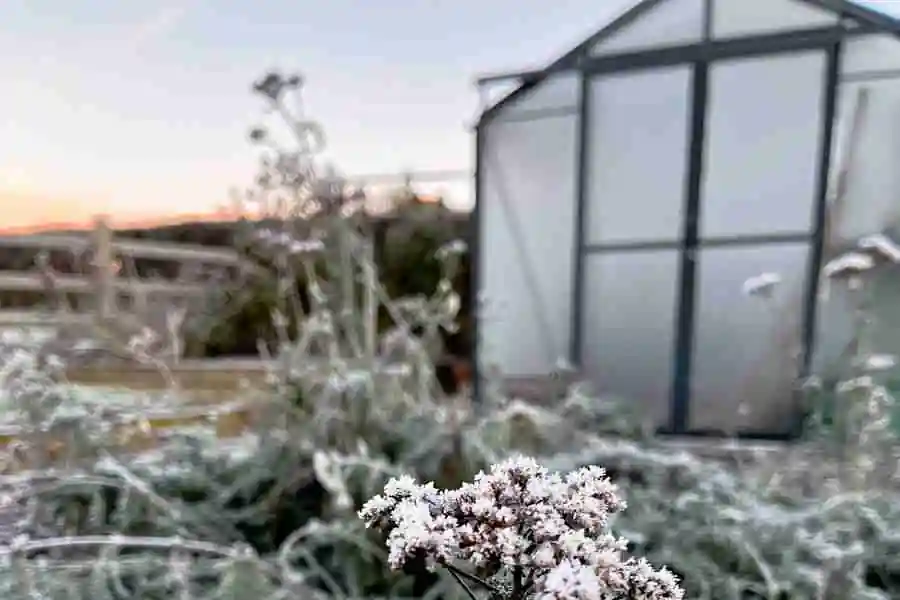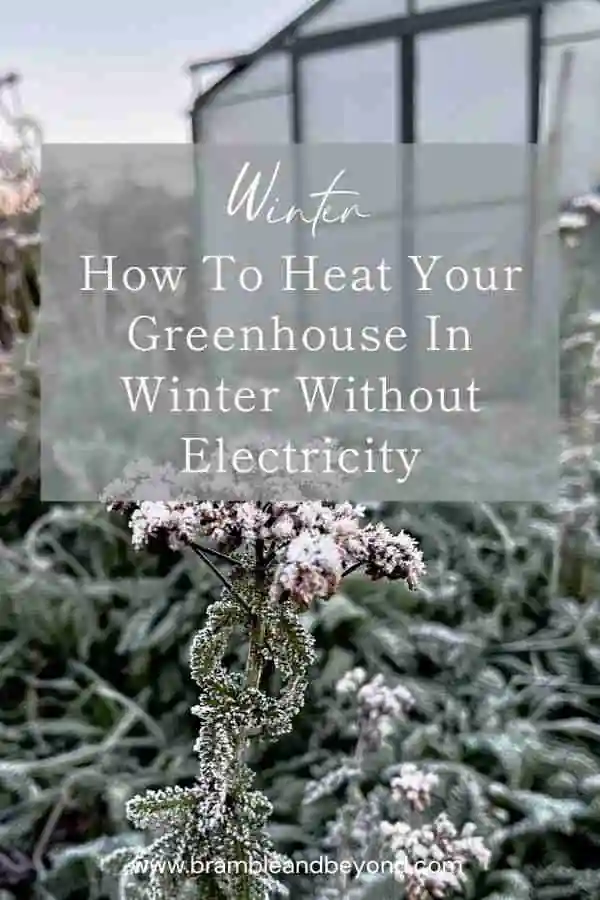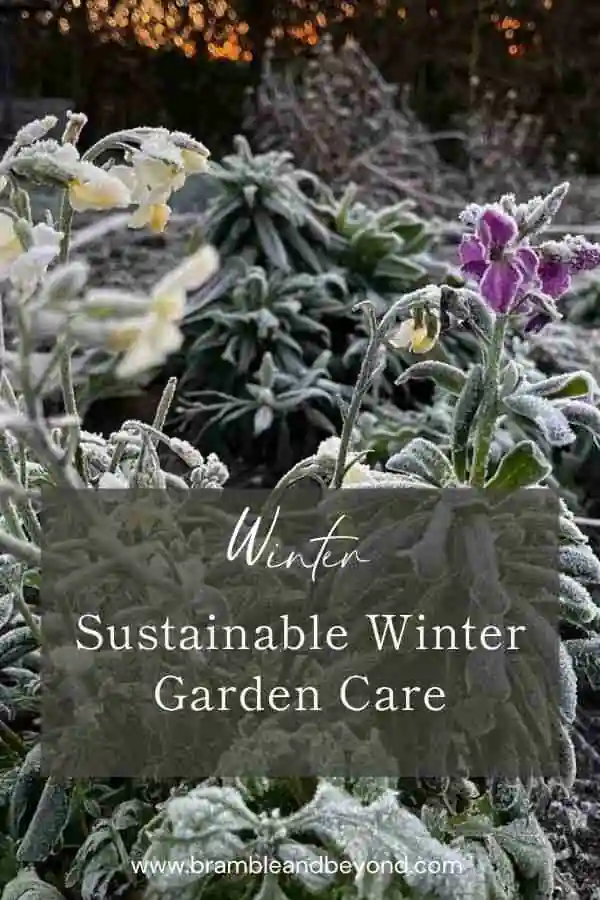Disclosure: This post may contain affiliate links, meaning I get commission if you decide to make a purchase through my links, at no cost to you. Please read my Affiliate Disclosure for more information.
When winter is knocking at our greenhouse doors, if you’re like me, you’re already dreaming of what will be flowering in those warm summer months. However, to achieve your dreams it helps if you can keep your winter greenhouse warm and cozy. But to do it without breaking the bank or harming the environment can be a challenge, and especially if you haven’t got electricity to hand.
Fear not, I’ve got you covered with five free and sustainable heating methods that don’t require electricity and that will keep your plants frost-free and thriving throughout the chilly months. Each method is not only eco-friendly but also practical and cost-effective. So, grab a cup of tea, settle in, and let’s dive into these fantastic solutions!
Why you might need to heat your greenhouse
Before we dive into the methods, let’s talk about why you might need to heat your greenhouse in the first place. Here in the UK, our winters are relatively mild compared to other parts of the world. However, there are still those bitterly cold nights that can damage your plants if they’re not properly protected. If you’re growing hardy annual flowers or tender ranunculus, you’ll want to keep them protected to take the edge off the cold and to keep them thriving.
On the whole, where I live in Shropshire in the UK, we only really get a handful of really frosty nights each winter. So, to fork out for expensive greenhouse heating seems frivolous and wasteful. Especially as most of my plants that overwinter in the greenhouse can withstand some cold. It is only if it is going to get very cold, or is cold for an extended period of time, that I get worried.
When this happens, I have no electricity anywhere near my greenhouse, so I need to get creative with how I can take the edge off the cold in my greenhouse. While I might not need constant heating, having a reliable, sustainable heating method ready to go for those cold snaps is crucial.
1. The candle pot heater method
Let’s start with one of my favourite DIY heating hacks—the brick, candle, and terracotta plant pot method. It sounds like something out of a garden fairy tale, but it’s a remarkably effective way to generate a little warmth in your winter greenhouse.
How the candle pot heater method works
The concept is simple yet brilliant. The thermal properties of bricks and terracotta help retain and slowly release heat. Don’t try this with plastic pots! By placing a candle underneath an inverted terracotta pot, the pot absorbs the candle’s heat and radiates it out, warming the surrounding area. Bricks can be used to support the pot and add extra thermal mass.
Pros and cons of the candle pot heater method
Advantages:
- Inexpensive: Most of us have candles, bricks, and terracotta pots lying around.
- Easy to Set Up: No technical skills required—just a bit of creativity. It is also something you can setup quickly when required.
- Accessible: Perfect for small greenhouses or specific plant areas.
Disadvantages:
- Limited Heat Output: This method won’t heat a large greenhouse but is ideal for small spaces or individual plants.
- Requires Monitoring: Candles need to be replaced and monitored for safety.
- Health & safety issues: Please be careful lifting the pots and penny off – they really do get hot!
Instructions:
Here’s how you can set up this heating method:
- Materials Needed: Two terracotta pots (one bigger than the other), a small candle, bricks or stones, a used metal tea light candle cup, and a heat-resistant surface.
- Setup: Place the candle on the heat-resistant surface. Arrange the bricks around the candle to create a stable base for the terracotta pot.
- Assembly: Invert the smaller terracotta pot over the candle, ensuring it’s well-supported by the bricks. Cover the hole with the use tea light. Place the larger terracotta pot over the smaller post.
- Safety Tips: Always place the setup on a non-flammable surface, keep an eye on the candle, and never leave it unattended.
Below is video that I found really good at explaining how this works and shows you how to build one.
2. Hot Bed or Composting Hay and Straw Bales
Next up, let’s harness the power of nature with hot beds or composting hay and straw bales. This method utilises the natural heat produced by decomposing organic materials to warm your winter greenhouse.
How hot beds and composting bales work
As hay and straw bales decompose, they generate significant amounts of heat. Think about when you mow the lawn and leave the grass clippings in a pile. They get nice and steamy within hours. By creating a hot bed within your greenhouse, you can provide a steady source of warmth for your plants.
Pros and cons of hot beds
Advantages:
- Natural Process: Uses readily available organic materials.
- Dual Benefits: Produces heat and compost for your garden. It also stops weed growth wherever the bale sits.
- Effective: Can generate substantial warmth, especially in larger greenhouses.
Disadvantages:
- Space Requirement: Needs a dedicated area within the greenhouse.
- Needs Setup Time: You will need to get it setup before the cold weather starts, as setting it up the afternoon before a frosty night might not provide enough time to get that heat started.
- Maintenance: Regular turning and monitoring of the compost pile might be necessary.
Setting up a hot bed in your winter greenhouse
- Materials Needed: One or more hay or straw bales, or a pile of manure, a compost thermometer.
- Construction: No special setup requirements are needed, but you may prefer to contain it if you want more localised heat.
- Layering: Water the bale or pile to kickstart the decomposition process.
- Monitoring: Regularly check the temperature with a thermometer and turn the pile to ensure even decomposition.
Here’s a great video by the no-dig guru Charles Dowding on how he builds his hot bed in his greenhouse.
3. Passive solar heat with water butts
If you’re looking to harness the sun’s energy, passive solar heating with water butts is an excellent option. This method utilises water-filled containers to absorb and release heat, keeping your winter greenhouse warm.
Principles of passive solar heating with water butts
Water has a high heat capacity, meaning it can store and release heat slowly. By placing water butts in strategic locations, they absorb sunlight during the day and radiate the stored heat at night.
I always try to keep several filled watering cans in my greenhouse, to take the edge off a chill. It also helps not having to break through ice in the water butts when watering. I’m not sure it is sufficient to protect from frost, but in my mind I’m at least doing something to help.
Pros and Cons of using water butts for solar heating
Advantages:
- Low Cost: Utilises natural sunlight with minimal expense.
- Effective Heat Storage: Water’s high heat capacity makes it an efficient thermal mass.
- Environmentally Friendly: No additional energy sources needed.
Disadvantages:
- Sunlight Dependency: Less effective in areas with limited sunlight.
- Space Requirement: Water butts can take up significant space.
Implementing water butts for passive solar heating in your winter greenhouse
Here’s how to make the most of water butts:
- Materials Needed: Large water containers (butts, barrels or simply watering cans), a location with good sunlight exposure.
- Placement: Position the water butts where they will receive maximum sunlight during the day.
- Optimisation: Paint the containers black to enhance heat absorption. Group them together to increase thermal mass.
- Maintenance: Ensure the containers are filled with water and check for leaks regularly.
4. Placing an animal hutch in your greenhouse
This next method might sound a bit unconventional, but placing an animal hutch in your greenhouse can provide a steady source of warmth. The body heat from animals like rabbits or chickens can help maintain a comfortable temperature.
How animal hutches provide heat
Animals generate body heat, which can raise the ambient temperature in a greenhouse. A small hutch or coop can be integrated into your greenhouse setup to benefit from this natural warmth.
Pros and Cons of using an animal hutch for heating
Advantages:
- Constant Heat Source: Animals provide continuous warmth.
- Dual Purpose: Combine animal care with plant protection.
- Natural and Sustainable: Uses the natural body heat of animals.
Disadvantages:
- Requires Animal Care: Need to provide proper food, water, and hygiene.
- Potential for Odour and Noise: Consider the type and number of animals.
Setting up an animal hutch in your winter greenhouse
To integrate an animal hutch:
- Choosing the Right Animals: Small animals like rabbits or chickens are ideal.
- Placement: Position the hutch in a corner of the greenhouse, ensuring it’s secure and comfortable for the animals.
- Maintenance: Regularly clean the hutch and provide fresh food and water. Ensure adequate ventilation to avoid ammonia buildup.

5. Improve insulation
Last but not least, improving insulation is crucial for maintaining warmth in your winter greenhouse. By adding double layers and sealing all openings, you can significantly reduce heat loss.
The importance of proper insulation in a winter greenhouse
Good insulation helps retain heat, making it easier to maintain a stable temperature. This reduces the need for additional heating and enhances energy efficiency.
This should really be your starting point if you are even remotely interested in keeping your greenhouse warm in the winter.
Pros and Cons of enhanced insulation
Advantages:
- Reduces Heat Loss: Keeps warmth inside the greenhouse.
- Improves Energy Efficiency: Less reliance on external heating sources.
- Cost-Effective: Long-term savings on heating costs.
Disadvantages:
- Initial Setup Effort: Requires time and materials to install.
- Potential Cost: Quality materials can be expensive.
Steps to improve insulation in your winter greenhouse
Here’s how to enhance insulation:
- Double Layers: Add a second layer of plastic or glass to create an air gap that acts as an insulator. I find bubble wrap is the easiest material to use for a quick and effective solution. The bubble wrap can be saved from all your parcels throughout the year and just taped to the windows with masking tape.
- Seal Openings: Check for gaps around doors, windows, and vents. Again use weatherstripping or a layer of bubble wrap in these areas and prevent drafts.
- Insulate the Ground: Lay insulation mats or use straw to cover the ground, reducing heat loss through the floor.
Choosing the right sustainable heating method for your winter greenhouse
So there you have it—five sustainable heating methods to keep your winter greenhouse warm and your plants happy without the need for electricity. Whether you opt for the simplicity of the candle pot method or the more involved hot bed setup, each of these solutions offers a way to garden sustainably and efficiently.
Final thoughts on sustainable greenhouse practices
Remember, the key to a successful winter greenhouse is finding the balance between maintaining warmth and being mindful of your environmental impact. Experiment with these methods, combine them if needed, and find what works best for your specific setup.
As the saying goes, “The greatest threat to our planet is the belief that someone else will save it.” By adopting sustainable practices in our gardens, we contribute to a healthier planet for future generations.
I’d love to hear about your experiences with winter greenhouse heating. Have you tried any of these methods? Do you have any other tips to share? Leave a comment below and let’s keep the conversation going. And don’t forget to subscribe to our blog for more sustainable gardening tips and ideas.







